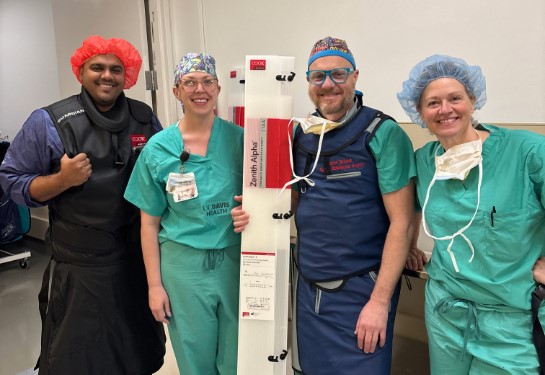Sex, drugs and arrhythmia: Modeling approaches to enable precision cardiac pharmacology
Drug development and deadly heart side effects
One of the leading causes for drug development discontinuation is the risk of cardiovascular toxicity — damage to the heart due to harmful chemicals. It constitutes a common critical side effect of new drugs and accounts for 40% of all drugs withdrawn due to health safety concerns.

To better curb the risk of heart complications due to novel drugs, UC Davis Health researchers at the GRANDi laboratory are using computer simulations to understand and predict the impact of new drugs on the cardiac cells.
Predictive computer simulations advance precision medicine
The U.S. Food and Drug Administration (FDA) has set strict regulatory guidelines to ensure cardiac safety and to minimize clinical risks of new compounds during drug development. These guidelines have been successful in reducing drug-induced arrhythmia — a potentially deadly heart condition — but also have prevented safe compounds from reaching the clinical phase.
Computer models and simulations are powerful tools that can complement and accelerate experimental and clinical research. They can reduce, and in some cases replace, the use of animals in testing, and can cut expenses and time for experimentation.
Ele Grandi and her team of researchers at the GRANDi Laboratory develop mathematical models of cardiac electrical activity that integrate large sets of experimental and clinical data. They use simulation to understand disease processes (such as arrhythmia), identify therapeutic targets and predict the outcome of treatment strategies.
In recent years, many researchers, including Grandi and her team, published cardiac simulation frameworks and used them in defining new predictive paradigms for cardiac safety. Yet, none of these strategies accounted for conditions and differences between patients. Factors such as biological sex have not been considered, despite being known independent risk factors for drug-induced arrhythmias.
Female sex is underrepresented in research and clinical studies
“Both adopted and recently proposed metrics of drug-induced arrhythmia are biased toward the male and perform worse in females than males,” said Grandi, Dean’s Fellow in Precision Medicine and associate professor of pharmacology at UC Davis School of Medicine. “We seek to improve the assessment of drug cardiotoxicity through the inclusion of biological sex in the predictive framework.”
Grandi noted that female sex is vastly underrepresented in both basic research and clinical studies. To find biomarkers of arrhythmia risk, her team applies machine learning to “synthetic data” — generated by simulating drug effects on cardiac cells that mimic male and female electrophysiology.
They will perform virtual drug trials in populations of thousands of simulated individuals. These trials are to study how variations between subjects can affect their chances of having arrythmia and the way they react to it. These new predictive tools could be implemented in promoting cardiac safety.
“Developing therapies for individual people might be too complex and expensive to achieve but defining groups of people in the interest of treating them more precisely is a more attainable goal,” Grandi added.
After biological sex, the team plans to extend the predictive framework to include age and disease states.
The next step is to validate the results with electro-physiological in-vitro experiments in patient derived cells to pave the way for better and more personalized safe pharmacology.



